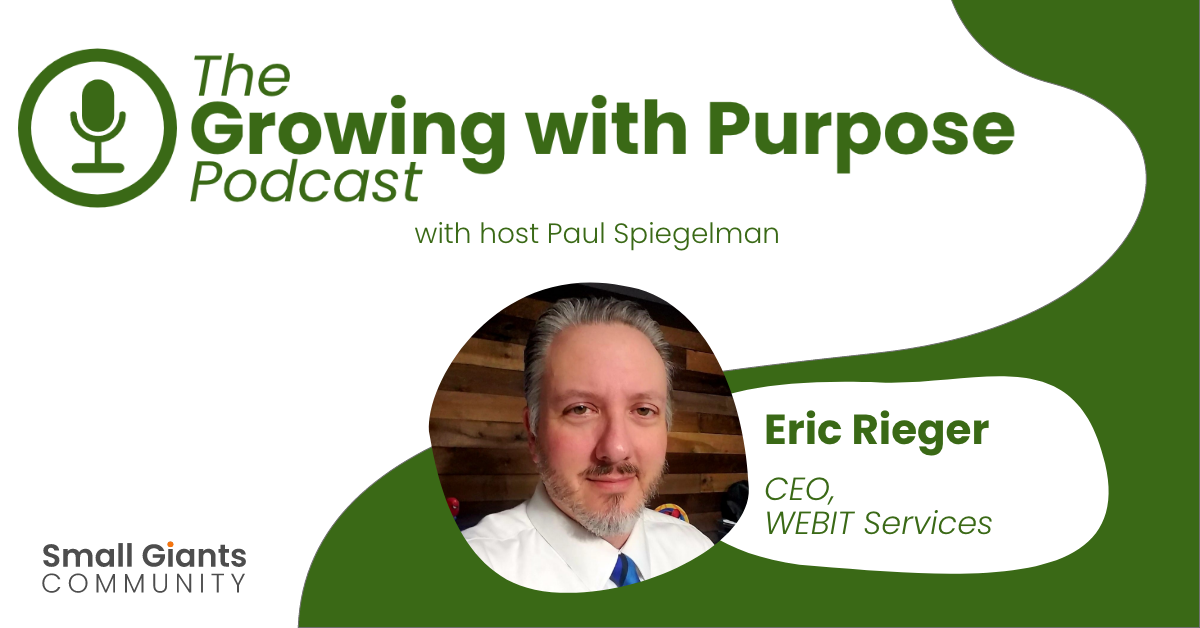How to Write a Company Vision Statement

At the heart and soul of every company is its purpose, core values, and vision. When you commit to uncovering these three pillars and preserving them as your business’s driving strategy, you’ll begin to discover a new way of doing business.
For leaders looking for guidance on how to write a company vision statement, it all starts with learning the basics of formulating your organization's vision and implementing it as a business strategy. What does success look like for your company? When you have a company vision, you’ll always have a vivid, compelling answer to that question.
A company vision is a description of what success looks like at a particular future point for your business. Your company vision is a key part of the larger framework that makes up your core ideology, along with your company’s purpose and core values. When you take the time to envision your company’s future and document it, you are creating a clear destination that everyone in your company is working towards. Your company vision should be aspirational yet attainable, inspirational yet realistic. Without a vision, it’s easy to get off track and get distracted, pursuing opportunities that don’t help bring your vision to life.
Ready to craft a clear vision of success for your company? Sharpen your pencils and let’s get started.
Define Your Company Vision
Writing a company vision may sound daunting, but you can actually write the first draft in a one-day session and continue to revise as necessary. Be as inclusive as possible when selecting participants, but keep it realistic. This shouldn’t be a top-down exercise, so invite cross-functional, frontline team members to participate in this session.
According to ZingTrain, a training organization dedicated to sharing Zingerman’s unique and successful approach to business, there are four elements of a successful vision: it should be inspiring, strategically sound, documented, and communicated. Zingtrain Founder and Managing Partner Maggie Bayless and Small Giants Community Founder Paul Spiegelman share a few ideas to get you started:
Participation is key. In order to draft an authentic vision, you need authentic conversation. Don’t worry about prepping your team members with homework assignments in advance of the session - you want them to come to the session fresh and with open minds. Designate a facilitator who will encourage an open environment with lots of participation.
Get it on paper. Your visioning session should be dedicated to answering one simple question: what does success look like [insert time frame] from now?
- In one approach, your designated leader can facilitate an engaging, open dialogue around the categories that will define company success. Participants will help build a bulleted list of the measurable indicators of company success. What does it look like to work at your company at that point in time? What specific things have you accomplished? What do your employees say about what it feels like to be a part of your organization? What do your customers say about what it’s like to work with you?
- In a ZingTrain-inspired approach, participants will each sit down for 15-20 minutes to free write their take on the company vision. They should aim to paint a picture of company success that is specific, vivid, and rich in detail. Participants then share their visions with the larger group or in pairs to illuminate common themes.
Gather feedback and revise. No matter your approach, gathering internal feedback and revising your draft is key. A smaller group of company leaders should be in charge of identifying common goals and wordsmithing a coherent, cohesive vision. Then, you may consider consulting an outside source, like a trusted mentor, to read your vision and provide feedback. Ask them which parts of your vision are compelling, which are confusing, and what’s missing. Review, revise, and reveal your finalized vision!
Develop a strategic plan. If the vision is your destination, the strategic plan is your roadmap to help you get there. Keep in mind that while your vision may be long term, strategic plans can be broken down into shorter time frames to help you achieve specific milestones from the vision. For example, if you wrote a 10-year vision, craft a strategic plan for the next three years.
Implementing Your Vision As a Business Strategy
Now that you've written a company vision statement, it's time to begin the hard (but rewarding!) work of bringing your company vision to life in your organization. Clear a path for realizing your company vision with these key steps for implementing it as a business strategy at every level of the organization:
Distribution is important. After your vision is finalized, how you communicate it throughout the company is just as important. It’s not done through a quick announcement or putting up a poster - it must be socialized throughout the company. This means talking about it in every function of the business, telling stories about it, and discovering how the vision connects and resonates with each employee. The key to its success is how often it’s talked about every day.
Embed it into daily business. Like your company purpose and core values, your vision should show up in recruiting, onboarding, performance evaluations, and reward and recognition programs. One way to create lasting buy-in is to hold smaller meetings with each and every employee, going through the vision line by line and having a discussion about what it really means. Find out how they connect to it on an individual level and how they can use their role in the company to bring it to fruition.
Engage and motivate customers. We all have competitors. What do you truly have to do to differentiate yourself from them? Your vision allows you to sell who you are, not what you do. No one else can offer that. Be bold and share your vision with potential and current clients and stakeholders. Be transparent about how important it is to your company and what role they can play in the larger purpose you strive for.
Revisit and refocus. Make it part of your business plan to review your company vision, along with your purpose and values, annually. When reviewing your business plan, ask yourself whether you are focused on the right milestones in your vision and adjust your priorities accordingly. Is that future date you set for your vision rapidly approaching? It’s time to repeat the process and write your next vision!
If you're feeling inspired by this visioning process, remember that it doesn't have to be limited to just your company. Visioning is a powerful tool to employ on a smaller scale, too. Use the process to optimize team projects or as a professional development exercise with team members. Think about it: do you know the personal visions of your employees? What are their core values? Visioning with your employees could help you unlock new ways to help them get to where they want to be in their lives.
Want even more purpose-driven leadership articles delivered to your inbox? Subscribe!





Submit Your Comment